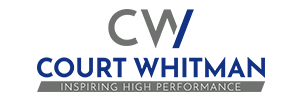
Overlooking the Appalachian Trail on the road to Damascus VA.
Life is a constant state of transition. But transition from one vocation to another can be challenging. This is especially true for many veterans who are in transition out of military service and into that first civilian career. In many cases, the service-member’s vision for their military service was incredibly clear because the military does a good job executing job-specific initial training, professional military education & development, and Human Resource Command establishes milestones and criteria for promotion. The organizational culture of the military is also unique and typical of numerous episodes of deliberate discomfort (training, combat operations, loss) followed by celebration (mission accomplishment). And these deliberate discomfort and celebratory experiences build trust rapidly and enable teams and organizations to become incredibly aligned and committed to the organizational vision & mission and to one another.
At times, the mental picture of professional service post-military can be somewhat clouded and confusing. What skills transfer? Will I find the right fit and company culture again? How do I articulate my value to a civilian employer? How do I perform at the high levels that I am used to in the military? If either of these questions cloud the vision that you hold for yourself during transition, consider the “I SEE BY”(™) (ISCBI) framework and discover clarity in all your transition moments.
The ISCBI “I SEE BY”(™) Framework for high-performance in transition.
“I” – Identity.
- Identity is “the distinguishing character of an individual” and character is “the mental and moral qualities unique to you.”
- What is your identity? What is your character? What are your 3-5 dominant core values and have you defined them?
“S” – Strengths.
- Strengths are your best attributes, your inherent assets, the things that make you talented and unique.
- Are you aware of your dominant strengths? If so, are you focused on a career that aligns with what you’re naturally good at?
“C” – Core Competencies.
- Competence is defined as “the quality or state of having sufficient knowledge, judgment, or skill, for a particular duty.”
- Have you self-reflected and identified your areas of core competency? Identify no less than 3 and no more than 9 Core Competencies and align these with your job search.
“B” – Behavior.
- Behavior is “the way in which you conduct yourself” “the way in which you function or operate.”
- How do you conduct yourself at work? How do you function? How do you operate?
“I” – Influence.
- Effective positive influence is what we all chase in order to perform at a high levels.
- Leadership is influence. Do you have a great awareness of your influence?
I encourage you to embrace each of your transition moments and consider the “I SEE BY”(™) framework, in part or holistically, to rediscover clarity and enable your high performance in transition.
